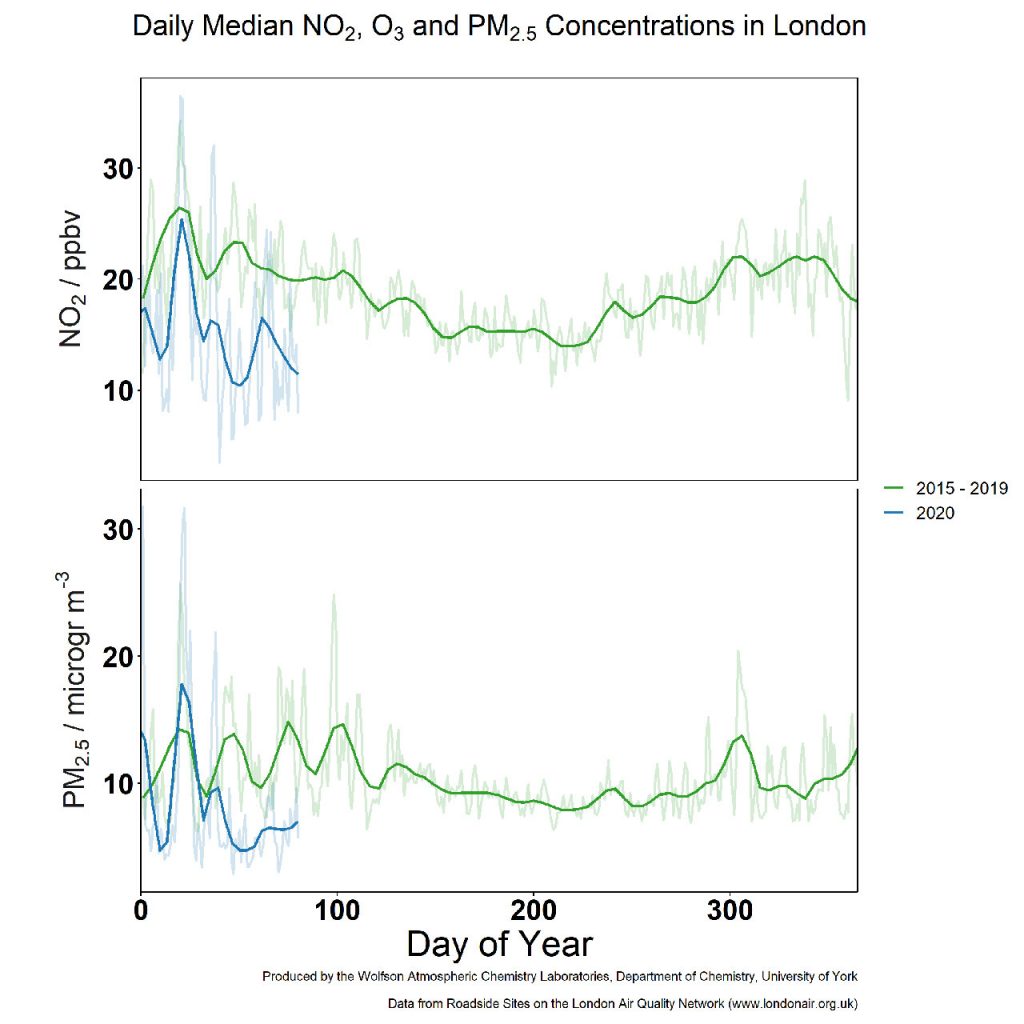
Early signs suggest COVID-19 outbreak will impact UK air quality
Scientists have seen significant reductions in air pollution levels around the world, as the COVID-19 outbreak impacts travel and work.
At the start of March, NASA revealed that levels of pollution in China had fallen significantly. While Italy, the country with the highest number of COVID-19 cases, has also experienced a reduction in air pollution.
Early signs suggest that the UK may follow a similar pattern, with air pollution falling across major cities.
Pollution levels in London
Data from the London Air Quality Network shows that nitrogen dioxide (NO2) and particulate Matter (PM2.5) levels have fallen in London since mid-February. Levels have been significantly lower than the average of the previous five years.
Nitrogen dioxide is primarily emitted from vehicle exhausts, so this reduction is likely to be caused by lower levels of traffic in the city. The sources of particulate matter are more varied, ranging from road transport to fuel burning.
Scientists caution that the data requires detailed analysis before they can pinpoint the exact causes of the pollution decline. There are many factors that affect pollution levels – including local weather, new regulations and human activity.

Further declines expected
The UK Prime Minister Boris Johnson has recently announced even stricter measures to prevent citizens from leaving their homes, which may lead to further decreases in pollutant emissions.
Prof. James Lee and his colleagues at the National Centre for Atmospheric Science will be keeping an eye on this data over the coming months, which is measured at nearly fifty sites across London including on top of the landmark BT Tower.
He said: “Pollution levels are clearly lower than the average of the previous five years. I would expect them to drop even further over the coming weeks.”
Rural pollution rises
While the signs are promising for the UK’s cities, the picture is less clear for rural areas.
Interestingly, some remote areas in the UK have seen a rise in pollution over the last week.
Levels of nitrogen dioxide appeared to be higher in the Scottish village of Eskdalemuir and the Welsh town Narberth this weekend, according to Environment Agency data.
It is unclear what caused the rural increases, but the figures will leave scientists questioning whether there is a connection between the nitrogen dioxide emissions and measures to help combat the spread of coronavirus.
